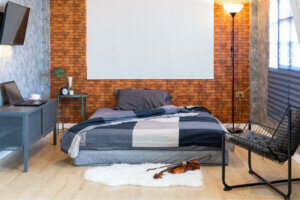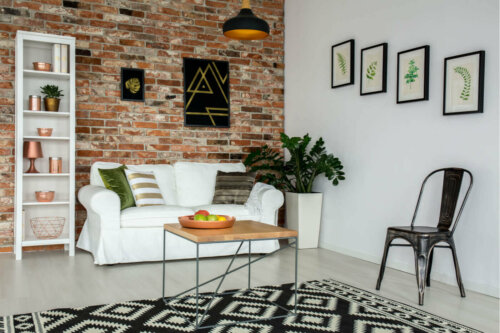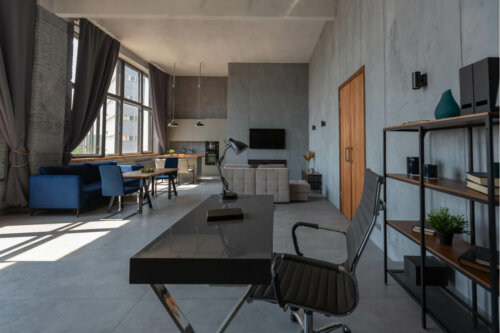Five Items to Create the Perfect Industrial Style in Your Home

The meaning of a personalized and authentic design lies in the choices you make. Depending on the items you use, you’ll demonstrate your abilities. Therefore, let’s look at 5 items to create the perfect industrial style in your home.
This aesthetic concept is becoming common nowadays, thanks to the new approaches taken by interior designers, which are based on urban and functional principles. Basically, there are countless possibilities with this style.
Instead of resorting to traditional design, you can turn to those more innovative formats that fit the modern idea of decor. In other words, a way of making your home more sophisticated.
The perfect industrial style in your home
1. Exposed walls

Creating the industrial style in your home means spontaneity, simplicity, and boldness. It isn’t a question of offering complex combinations or contrasts that create tension. All elements must make sense in a cordial and uncomplicated way.
One such instance is the walls, which can be left exposed with the original material on view. The most common are brick walls. In this way, a more urban and alternative effect is produced.
In the same way, you can use stones, concrete blocks, or smooth and painted walls. You shouldn’t forget you have the opportunity to use this idea by alternating materials on different walls. It could be a way of livening them up and establishing differences between them.
It’s time to bring an urban touch to the home.
2. Metal objects
Another of the most relevant contributions to this style is metal objects. Obviously, you can use other materials: wood, marble, granite, etc. These have a lot to say in interiors. Let’s take a closer look at some examples:
- A metallic chest is a discreet, simple, and basic item. It isn’t striking, nor does it stand out because of its size. You can find one with a more rusty appearance and produce a more interesting visual effect.
- The coffee table in the living room, right in front of the sofa and on the rug, can be a nice addition. There are tables with slender and thin legs or with round or square tabletops. Everything will depend on the aesthetic sensation you want to provide.
- Generally, city lofts are configured in this style. To get there you require stairs that must portray an industrial image.
3. Industrial style in your home – lamps

If you want a modern and refined image, the lamps take on greater prominence. Design and form must become a dynamic component of the interiors.
In this sense, you can find all kinds of formats. Hanging lamps are the most interesting with a stylized body, and a wide and striking shape, a concept also very typical of the high-tech style.
In the same way, you can find standing lamps, that rise with a defined and functional effect, as with spotlights, both on the ceiling and the floor.
4. Clocks to keep track of time
There are different ways to use this item and we’re going to point out two. Firstly, some are placed above the fireplace, on a piece of furniture, or a countertop. Secondly, electronic ones go very well with this style and create a contemporary feel.
Another interesting option is a wall clock, as in a train station. Furthermore, they’re an active and original item that’ll transport you to an urban space.
5. Industrial style chairs
Today, a wide variety of chair designs are available on the market. Furthermore, numerous artists and interior designers have created, throughout history, different aesthetic approaches. Some examples are the Ball Chair, the CH20, the Taliesin, among others.
Any option can be good, it’s just a matter of knowing how to combine them with the rest of the items. In other words, there should be no tension and everything should be in its place. This is because the item should offer a more daring character and provide personality.
The meaning of a personalized and authentic design lies in the choices you make. Depending on the items you use, you’ll demonstrate your abilities. Therefore, let’s look at 5 items to create the perfect industrial style in your home.
This aesthetic concept is becoming common nowadays, thanks to the new approaches taken by interior designers, which are based on urban and functional principles. Basically, there are countless possibilities with this style.
Instead of resorting to traditional design, you can turn to those more innovative formats that fit the modern idea of decor. In other words, a way of making your home more sophisticated.
The perfect industrial style in your home
1. Exposed walls

Creating the industrial style in your home means spontaneity, simplicity, and boldness. It isn’t a question of offering complex combinations or contrasts that create tension. All elements must make sense in a cordial and uncomplicated way.
One such instance is the walls, which can be left exposed with the original material on view. The most common are brick walls. In this way, a more urban and alternative effect is produced.
In the same way, you can use stones, concrete blocks, or smooth and painted walls. You shouldn’t forget you have the opportunity to use this idea by alternating materials on different walls. It could be a way of livening them up and establishing differences between them.
It’s time to bring an urban touch to the home.
2. Metal objects
Another of the most relevant contributions to this style is metal objects. Obviously, you can use other materials: wood, marble, granite, etc. These have a lot to say in interiors. Let’s take a closer look at some examples:
- A metallic chest is a discreet, simple, and basic item. It isn’t striking, nor does it stand out because of its size. You can find one with a more rusty appearance and produce a more interesting visual effect.
- The coffee table in the living room, right in front of the sofa and on the rug, can be a nice addition. There are tables with slender and thin legs or with round or square tabletops. Everything will depend on the aesthetic sensation you want to provide.
- Generally, city lofts are configured in this style. To get there you require stairs that must portray an industrial image.
3. Industrial style in your home – lamps

If you want a modern and refined image, the lamps take on greater prominence. Design and form must become a dynamic component of the interiors.
In this sense, you can find all kinds of formats. Hanging lamps are the most interesting with a stylized body, and a wide and striking shape, a concept also very typical of the high-tech style.
In the same way, you can find standing lamps, that rise with a defined and functional effect, as with spotlights, both on the ceiling and the floor.
4. Clocks to keep track of time
There are different ways to use this item and we’re going to point out two. Firstly, some are placed above the fireplace, on a piece of furniture, or a countertop. Secondly, electronic ones go very well with this style and create a contemporary feel.
Another interesting option is a wall clock, as in a train station. Furthermore, they’re an active and original item that’ll transport you to an urban space.
5. Industrial style chairs
Today, a wide variety of chair designs are available on the market. Furthermore, numerous artists and interior designers have created, throughout history, different aesthetic approaches. Some examples are the Ball Chair, the CH20, the Taliesin, among others.
Any option can be good, it’s just a matter of knowing how to combine them with the rest of the items. In other words, there should be no tension and everything should be in its place. This is because the item should offer a more daring character and provide personality.
All cited sources were thoroughly reviewed by our team to ensure their quality, reliability, currency, and validity. The bibliography of this article was considered reliable and of academic or scientific accuracy.
- AA. VV.: Vivir en la ciudad: diseño contemporáneo para la vida urbana, Blume, 1997.







